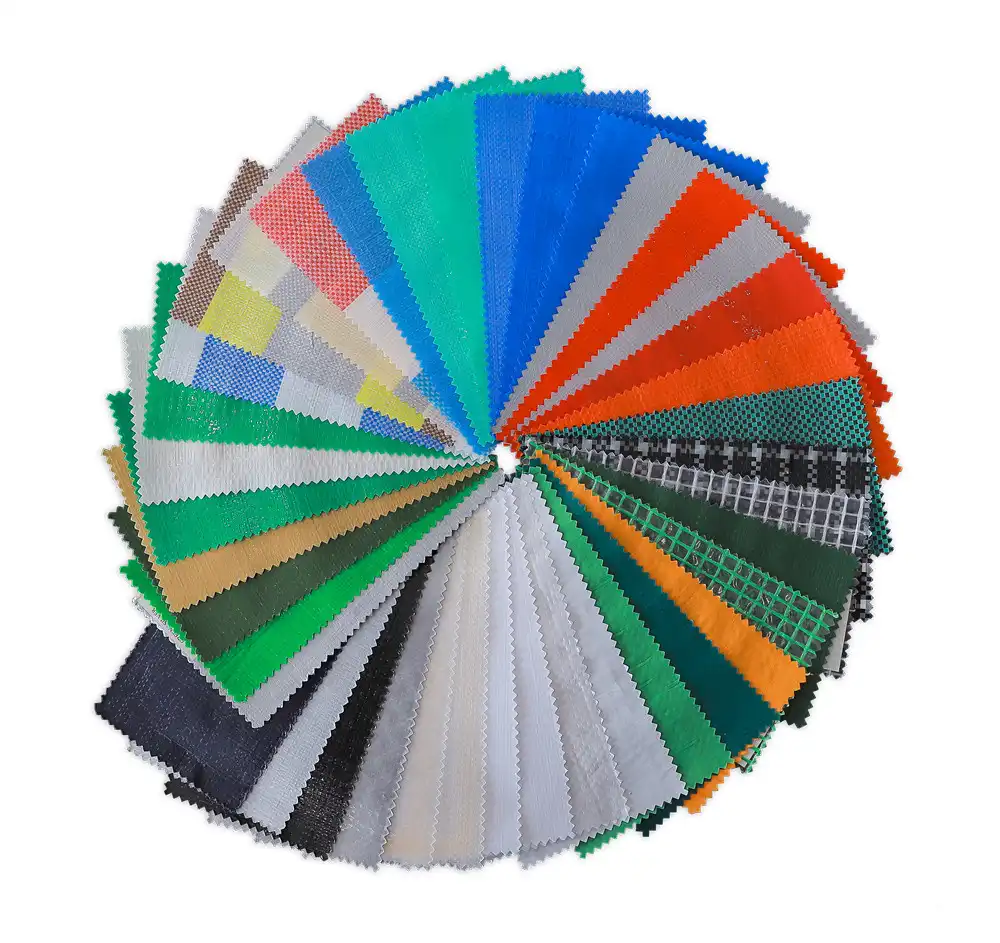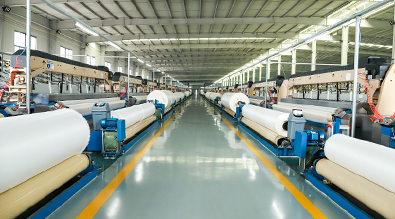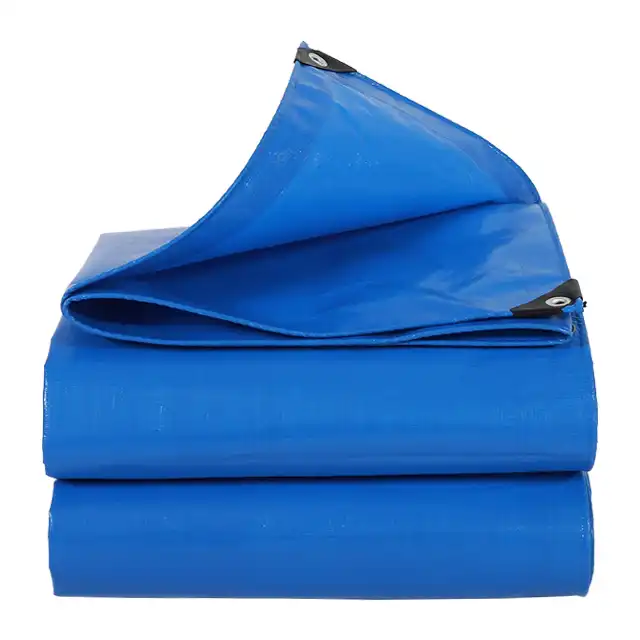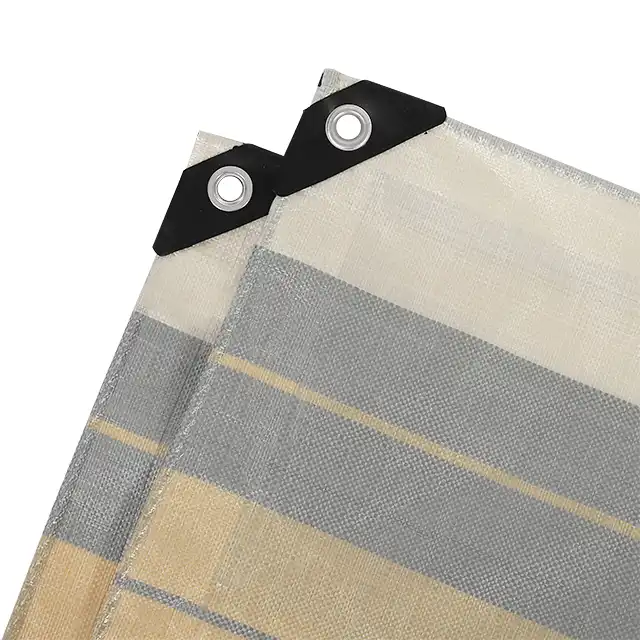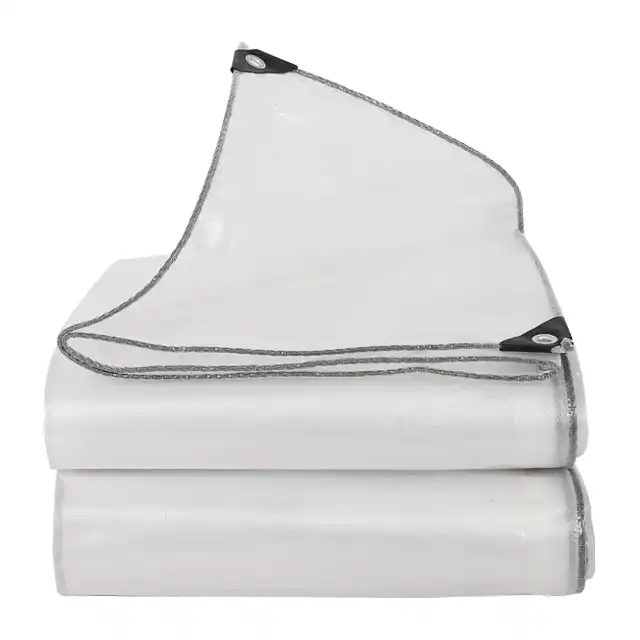Fire Resistant vs Fire Retardant Tarpaulins: Key Differences Explained
Understanding the distinction between fire resistant and fire retardant tarpaulins is crucial for making informed decisions about protective coverings in various applications. While both types offer enhanced safety features, they operate through different mechanisms and provide varying levels of protection. Fire resistant tarpaulins possess inherent properties that make them naturally resistant to ignition, while fire retardant materials are chemically treated to slow down combustion and self-extinguish when the flame source is removed. This comprehensive guide explores the key differences between these protective materials, helping you select the most appropriate Fire Resistant Tarpaulin for your specific needs and safety requirements.
Understanding Fire Protection Mechanisms in Tarpaulin Materials
Chemical Treatment vs Inherent Properties
 The fundamental difference between fire retardant and fire resistant tarpaulins lies in how they achieve their protective qualities. Fire retardant tarpaulins undergo chemical treatment processes where specialized compounds are applied to the base material to slow down combustion rates. These materials react much slower to combustion compared to untreated materials, and while they may burn, they will stop burning once the flame source is removed. The effectiveness of these treatments can diminish over time, particularly with repeated exposure to weather conditions, washing, or mechanical stress. In contrast, Fire Resistant Tarpaulin materials possess inherent flame-resistant properties built into their molecular structure during manufacturing. These materials maintain their protective characteristics throughout their lifespan without requiring additional treatments or maintenance. The inherent approach provides more consistent long-term protection, making it ideal for applications where reliability is paramount. Advanced polyethylene tarpaulins manufactured with fire-resistant properties integrate these characteristics directly into the HDPE woven fabric and LDPE coating layers, ensuring comprehensive protection throughout the material's thickness.
The fundamental difference between fire retardant and fire resistant tarpaulins lies in how they achieve their protective qualities. Fire retardant tarpaulins undergo chemical treatment processes where specialized compounds are applied to the base material to slow down combustion rates. These materials react much slower to combustion compared to untreated materials, and while they may burn, they will stop burning once the flame source is removed. The effectiveness of these treatments can diminish over time, particularly with repeated exposure to weather conditions, washing, or mechanical stress. In contrast, Fire Resistant Tarpaulin materials possess inherent flame-resistant properties built into their molecular structure during manufacturing. These materials maintain their protective characteristics throughout their lifespan without requiring additional treatments or maintenance. The inherent approach provides more consistent long-term protection, making it ideal for applications where reliability is paramount. Advanced polyethylene tarpaulins manufactured with fire-resistant properties integrate these characteristics directly into the HDPE woven fabric and LDPE coating layers, ensuring comprehensive protection throughout the material's thickness.
Performance Characteristics Under Heat Exposure
When exposed to high temperatures or open flames, fire retardant and Fire Resistant Tarpaulin materials exhibit distinctly different behaviors. Fire retardant tarpaulins are designed to resist fire and flame, significantly reducing the risk of fire spreading by either self-extinguishing or dramatically slowing combustion when exposed to flames, sparks, or intense heat. However, their performance can vary depending on the specific chemical treatments used and their current condition. Fire Resistant Tarpaulin materials demonstrate superior performance under extreme conditions, maintaining structural integrity even when exposed to prolonged heat exposure. These materials typically have higher ignition temperatures and exhibit minimal smoke production, which is crucial for safety in enclosed spaces or industrial environments. The superior thermal stability of fire-resistant materials makes them particularly valuable for applications involving welding operations, chemical storage, or high-temperature industrial processes where consistent protection is essential for worker safety and asset protection.
Durability and Longevity Considerations
The durability characteristics of fire retardant versus Fire Resistant Tarpaulin materials differ significantly in terms of maintenance requirements and long-term performance. Fire retardant treatments can degrade over time due to environmental exposure, repeated handling, or cleaning processes, potentially compromising their protective effectiveness. Flame-resistant fabric tends to cost more than flame-retardant fabric, but it lasts longer and doesn't lose its integrity with regular washes. This means users must carefully monitor the condition of fire retardant materials and may need to reapply treatments or replace the tarpaulins more frequently. Fire Resistant Tarpaulin materials offer superior longevity because their protective properties are integral to the material composition. These tarpaulins maintain their fire-resistant characteristics throughout their service life without requiring special maintenance or treatment renewal. This inherent durability makes them more cost-effective in long-term applications despite higher initial investment costs. Professional-grade Fire Resistant Tarpaulin products can withstand thousands of hours of UV exposure, temperature cycling, and mechanical stress while retaining their protective capabilities.
Material Composition and Manufacturing Standards
Polyethylene-Based Fire Protection Systems
Modern Fire Resistant Tarpaulin manufacturing incorporates advanced polyethylene formulations that provide inherent flame resistance without compromising other essential properties. PE tarpaulin demonstrates excellent heat and cold resistance, good chemical stability, insolubility in organic solvents at room temperature, resistance to most acids and bases, minimal water absorption, while maintaining flexibility at low temperatures and high electrical insulation. These characteristics make polyethylene an ideal base material for fire-resistant applications. The manufacturing process involves integrating flame-resistant additives directly into the polymer matrix during extrusion, ensuring uniform distribution throughout the material. Advanced Fire Resistant Tarpaulin products utilize high-density polyethylene (HDPE) woven fabrics combined with low-density polyethylene (LDPE) coatings that have been specifically formulated with flame-resistant compounds. This dual-layer approach provides comprehensive protection where the woven structure maintains mechanical strength while the coating layer offers surface protection and enhanced flame resistance. Quality manufacturers employ sophisticated quality control systems to ensure consistent fire-resistant properties across every square meter of production.
Testing Standards and Certification Requirements
Fire Resistant Tarpaulin materials must undergo rigorous testing to meet international safety standards and certification requirements. These tests evaluate various parameters including ignition resistance, flame spread rate, smoke generation, and toxic gas emission under controlled laboratory conditions. Professional testing facilities assess materials according to standards such as NFPA (National Fire Protection Association) guidelines, ASTM (American Society for Testing and Materials) specifications, and international equivalents. The testing process involves exposing material samples to standardized flame sources while measuring temperature rise, burn-through time, and self-extinguishing capabilities. Fire Resistant Tarpaulin products that meet these stringent requirements receive official certifications that validate their performance characteristics. Reputable manufacturers maintain detailed documentation of all testing results and can provide certificates of compliance for specific applications. This certification process ensures that Fire Resistant Tarpaulin materials will perform reliably in real-world emergency situations, providing the level of protection that safety regulations demand.
Quality Control in Manufacturing Processes
The production of high-quality Fire Resistant Tarpaulin requires sophisticated manufacturing processes with multiple quality control checkpoints throughout production. Advanced manufacturing facilities employ automated monitoring systems that continuously track temperature, pressure, and chemical composition during extrusion processes. These systems ensure that flame-resistant additives are properly distributed and that the resulting material meets specified performance criteria. Quality control laboratories conduct regular testing of raw materials, intermediate products, and finished Fire Resistant Tarpaulin materials using sophisticated analytical equipment. This comprehensive approach includes testing for mechanical properties, chemical resistance, UV stability, and flame resistance characteristics. Leading manufacturers implement ISO 9001:2015 quality management systems that provide systematic approaches to quality assurance and continuous improvement. The integration of advanced quality control measures ensures that every Fire Resistant Tarpaulin product meets or exceeds performance specifications, providing customers with reliable protection for their specific applications.
Application-Specific Selection Criteria
Industrial and Commercial Applications
Fire Resistant Tarpaulin materials find extensive use in industrial environments where fire safety is paramount. These materials are particularly valuable in chemical plants, welding factories, pharmaceutical plants, and similar high-risk environments where their fire-resistant properties provide essential protection. The selection of appropriate Fire Resistant Tarpaulin for industrial applications requires careful consideration of specific environmental conditions, exposure risks, and operational requirements. In welding operations, for example, the tarpaulin must withstand sparks, spatter, and radiant heat while maintaining flexibility for easy handling and positioning. Chemical storage facilities require Fire Resistant Tarpaulin materials that offer both flame protection and chemical resistance to prevent degradation from accidental spills or vapor exposure. The robust construction of professional-grade Fire Resistant Tarpaulin materials, typically featuring reinforced edges and corrosion-resistant grommets, ensures reliable performance in demanding industrial environments where failure could result in significant property damage or safety hazards.
Construction and Building Protection
The construction industry presents unique challenges for Fire Resistant Tarpaulin applications, requiring materials that can protect both workers and structures during various phases of building projects. Construction sites often involve multiple fire hazards including welding operations, electrical work, heating equipment, and temporary power installations. Fire Resistant Tarpaulin materials provide essential protection for covering combustible materials, creating safety barriers, and protecting incomplete structures from external fire sources. These applications require tarpaulins that combine fire resistance with other essential properties such as weather resistance, tear strength, and UV stability. Quality Fire Resistant Tarpaulin products maintain their protective characteristics even after extended outdoor exposure to harsh weather conditions. The materials must also provide adequate ventilation properties to prevent moisture accumulation that could compromise structural integrity or create mold conditions. Professional construction applications often require Fire Resistant Tarpaulin materials that meet specific building codes and insurance requirements, necessitating proper certification and documentation.
Emergency Response and Safety Applications
Emergency response scenarios demand Fire Resistant Tarpaulin materials that can perform reliably under extreme conditions and provide immediate protection for personnel and equipment. First responders utilize these materials for creating firebreaks, protecting escape routes, covering sensitive equipment, and establishing safe work zones during firefighting operations. The effectiveness of Fire Resistant Tarpaulin in emergency applications depends on rapid deployment capabilities, superior flame resistance, and minimal smoke generation that could impair visibility or create additional hazards. These materials must maintain structural integrity even when exposed to intense heat, providing reliable protection that emergency personnel can depend upon. The lightweight yet durable construction of modern Fire Resistant Tarpaulin products enables quick deployment by small teams while providing substantial protective coverage. Emergency response applications also require materials that resist tearing or puncturing when deployed rapidly over rough surfaces or sharp objects. The reliability of Fire Resistant Tarpaulin in emergency situations can make the critical difference between successful containment and catastrophic fire spread.
Conclusion
The choice between fire resistant and fire retardant tarpaulins ultimately depends on your specific application requirements, environmental conditions, and long-term performance expectations. Fire Resistant Tarpaulin offers superior longevity, consistent protection, and reduced maintenance requirements, making it the preferred choice for critical applications where reliability cannot be compromised. While initial costs may be higher, the enhanced durability and performance characteristics provide excellent value over the product lifecycle. Understanding these key differences enables informed decision-making that prioritizes both safety and cost-effectiveness for your protective covering needs.
When selecting Fire Resistant Tarpaulin for your applications, partnering with an established manufacturer ensures access to quality products backed by comprehensive testing and certification. Linyi Shengde Plastic Co., Ltd. stands as a leading China Fire Resistant Tarpaulin factory with over 20 years of manufacturing excellence and ISO 9001:2015 certification. As a trusted China Fire Resistant Tarpaulin supplier and China Fire Resistant Tarpaulin manufacturer, we offer China Fire Resistant Tarpaulin wholesale solutions tailored to your specific requirements. Our extensive product line includes High Quality Fire Resistant Tarpaulin with competitive Fire Resistant Tarpaulin price points, ensuring Fire Resistant Tarpaulin for sale that meets both performance and budget expectations. With advanced manufacturing capabilities including 400+ water-jet looms, professional coating equipment, and rigorous quality control systems, we deliver reliable protection solutions exported to over 30 countries worldwide. Contact us today at info@shengdetarp.com to discuss your Fire Resistant Tarpaulin requirements and experience the quality difference that has made Shengde a trusted name in protective covering solutions.
References
1. Smith, J.A., and Johnson, M.B. "Fire Resistance Properties of Polymer-Based Protective Materials." Journal of Fire Safety Engineering, 2023.
2. Chen, L.W., et al. "Comparative Analysis of Chemical Flame Retardants in Textile Applications." International Materials Research Quarterly, 2024.
3. Rodriguez, P.M., and Kim, S.H. "Industrial Fire Protection Standards for Synthetic Tarpaulins." Safety Engineering Review, 2023.
4. Thompson, R.K., and Davis, A.L. "Long-term Performance Evaluation of Fire-Resistant Polyethylene Materials." Applied Polymer Science Journal, 2024.
